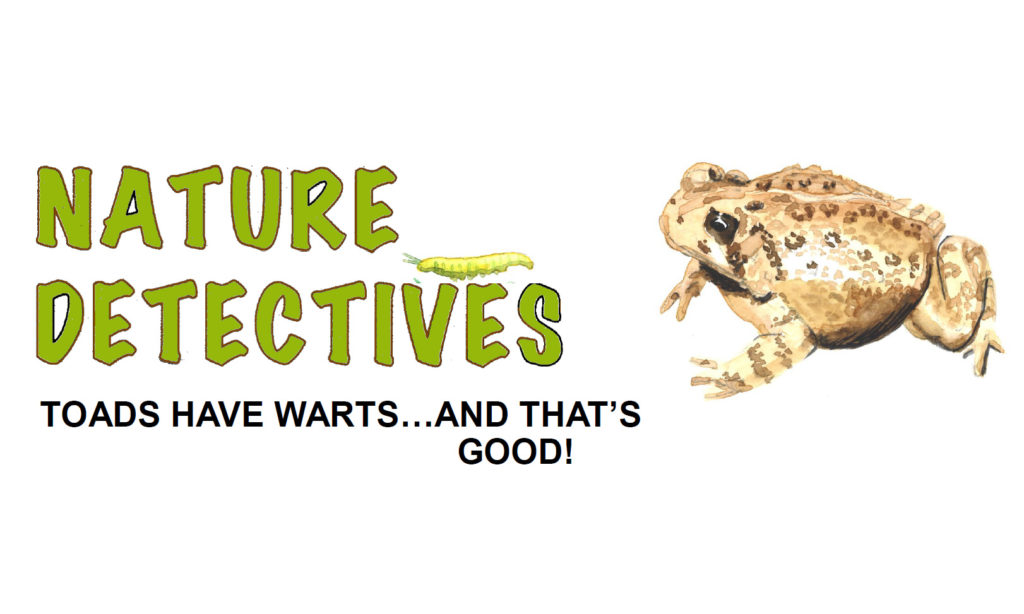Warts on your skin are not good. Warts can occur when a virus sneaks into human skin through a cut. A medicine gets rid of the virus and then it’s good-bye ugly wart. Toad warts look slightly like human warts, but toad warts and people warts are not one bit the same.
Toad warts are natural bumps on a toad’s back. Toads have larger lumps behind their eyes. The bumps and lumps are glands. The glands produce a whitish goo that is a foul-tasting and smelly poison. The poison is a toad’s ultimate defense in a predator attack. It is toxic enough to kill small animals, if they swallow enough of it. The toxin can cause skin and eye irritation in humans. Some people used to think toad warts were contagious. Touching a toad can’t cause human warts, but licking a toad might make you sick!
Toads have other defenses too. Their camouflage green/gray/brown colors blend perfectly into their surroundings. They can puff up with air to look bigger, and maybe less appetizing. Pick one up, and it might pee on your hand.
Toads Travel, Frogs Swim
Toads and frogs are amphibians with some similarities and quite a few differences. Amphibians spend all or part of their life in water. Frogs have moist, smooth skin that loses moisture easily. A toad’s dry, bumpy skin doesn’t lose water as easily as frog skin. Frogs are always in water or very near it, otherwise they quickly dehydrate and die. Toads start their life in water, but spend most of their adult life on land. Adult toads only go back to the water for a short time, once a year, during mating season.
Frogs have teeth; toads do not. Frogs are slender, and their long back legs allow them to leap far.
Toads are squat with legs more suited for hopping and for walking over longer distances.
Continue Reading & Download the Print Edition
Nature Detectives Library
Every past issue of Nature Detectives can be found in the Nature Detectives Library!

